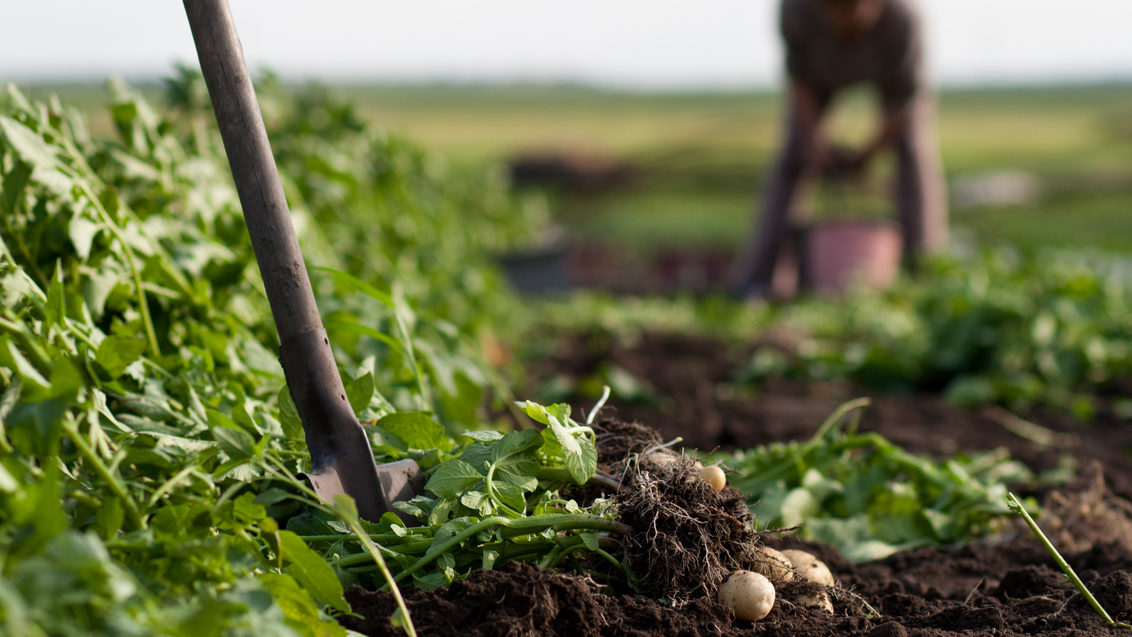From terminology to action

“Agroecology” is a much-used term today. But what does it mean? Views differ widely. A recent webinar* with our Foundation examined some definitions. Speakers also discussed how agroecology can translate into practical action for smallholder farming.
Professor Johan Six (ETH Zürich) opened with a definition from the literature: “Agroecology is the science of applying ecological concepts and principles to the design and management of sustainable food systems” He highlighted the reference to approaches rather than specific practices and to entire food systems, not just agriculture.
Johan Six sees three threads to agroecology: scientific research, principles & agricultural practices, and socio-political movements. At the webinar, he concentrated on research and the set of principles and practices characterized by the ten elements of agroecology.
These are:
- Diversity
- Co-creation and sharing of knowledge
- Synergies
- Efficiency
- Recycling
- Resilience
- Human and social values
- Culture and food traditions
- Responsible governance
- The circular and solidarity economy.
Six-pointed out that other concepts for food production, such as sustainable intensification, share many of these elements. The practice of agroecology, therefore, includes, for example, sustainable intensification. He also emphasized that agroecology does not per se prohibit the use of synthetic inputs such as fertilizers and crop protection products. The aim is to reduce their use, mainly via efficiency gains throughout the system.
Based on the literature, Six also explained the “five levels of transition” in agroecology. Level 1 sees efficiency increases, level 2 the substitution of conventional inputs. Agroecosystems are redesigned at level 3; the next step up brings the development of alternative food networks. Finally, at level 5, a new global food system emerges, based on participation, localness, fairness, and justice. Six classifies the first three as “agroecosystem”, the upper two as food system levels.
Partnerships and pragmatism
Karl Moosmann introduced the GIZ interpretation of agroecology. As well as the ten elements mentioned above, he referred to 13 principles laid out in the 2019 HLPE Report**. These are participation, land & resources governance, connectivity, recycling, input reduction, soil health, animal health, biodiversity, economic diversification, social values, food culture & traditions, synergies, and co-creation of knowledge. For Moosmann, the principles describe a “transformation pathway”. Defining and supporting the pathway helps to transform food systems and make them more sustainable and resilient.
In Moosmann’s view, agroecology works best in “functional landscapes” with thriving community organizations. Agroecology goes beyond individual farms and the ecological functions of a sound landscape. Nutritional habits are subject to external influences and incentives. “We need to think beyond just the production level and also incentivize change in the wider food system”, Moosmann emphasizes. Working with farmers is not sufficient on its own, he stresses. One also needs sound policies, good working institutions, appropriate legal frameworks and bylaws, knowledge management, and networking. For impact despite the many challenges, Moosmann recommends alliances of strong development partners.
The third webinar speaker was Matthew Freeman of One Acre Fund. He highlighted that 1AF takes a pragmatic approach to agroecology, with an emphasis on impact. 1AF defines impact as “big harvests, diversified production, healthy families, life-improving products and long-term soil fertility”.
1AF’s service model is based on farmers contributing to the cost of extension. In 2020, 1AF spent $120 per beneficiary; farmers paid 75%, and donors the rest. 1AF calculates donor subsidies vs. annual rise in farm income; the result is the program’s social return on investment. Each farmer participates individually. He or she chooses the inputs, is personally accountable for repaying his or her loan, and decides what to do with the produce. Farmers enroll annually; participation in any particular year is entirely their decision.
Challenges and a promising framework
Implementing the concept of agroecology, says Freeman, raises several challenges. One major one is the knowledge required for farmers and extension agents. Encouraging farmers to understand and adopt the principles of agroecology can be difficult, especially if the adoption does not lead to rapid financial benefits. ‘Last-mile’ logistics for delivering inputs and managing microfinance are another challenge. So are farmers’ land tenure and food insecurity. Smallholders can be reluctant to invest in their farms for the longer term if land rights are not fully secure. A further issue can be the ‘production penalty’ for implementing organic systems: this directly affects farmers’ food and nutrition security. The lack of clean seeds for diverse indigenous crops and agroforestry is a further challenge.
A key 1AF response is ‘field-level optimization’. This takes geographical and seasonal factors into account, strongly supported by digital technologies. For example, 1AF is increasingly using remote sensing and weather data to guide advice on planting dates and practices. The goal is to understand the economic optimum for each recommendation. “Our interest is to get more field-level rather than site-level optimization based on agroecological zones”, Freeman explains.
Stefan Kachelriess-Matthess (GIZ) and our Director Simon Winter hope that this event will lead to further exchanges. The participating organizations share the purpose of supporting smallholders and their communities to become more prosperous and resilient. “This is not just about food security or yield improvements. We are talking about rural transformation”, Kachelriess-Matthess underscored. “Agriculture is very complex; part of the solution is to bring complementary organizations together”, Winter continued. They both highlighted the importance of not getting tied up in terminology but concentrating on joint achievements. All organizations should be interested in partnering. However, alliances require carefully constructed dialogue about shared purposes, intentions, objectives, and outcomes. Agroecology provides a promising framework on which to build collaboration.
*Webinar staged by the Gesellschaft für Internationale Zusammenarbeit (GIZ), Syngenta Foundation for Sustainable Agriculture, ETH Zürich – World Food Systems Center (ETHZ) and the One Acre Fund (1AF), May 2021.
**HLPE 2019: Agroecological and other innovative approaches for sustainable agriculture and food systems that enhance food security and nutrition. A report by the High-Level Panel of Experts on Food Security and Nutrition of the Committee on World Food Security, Rome.
